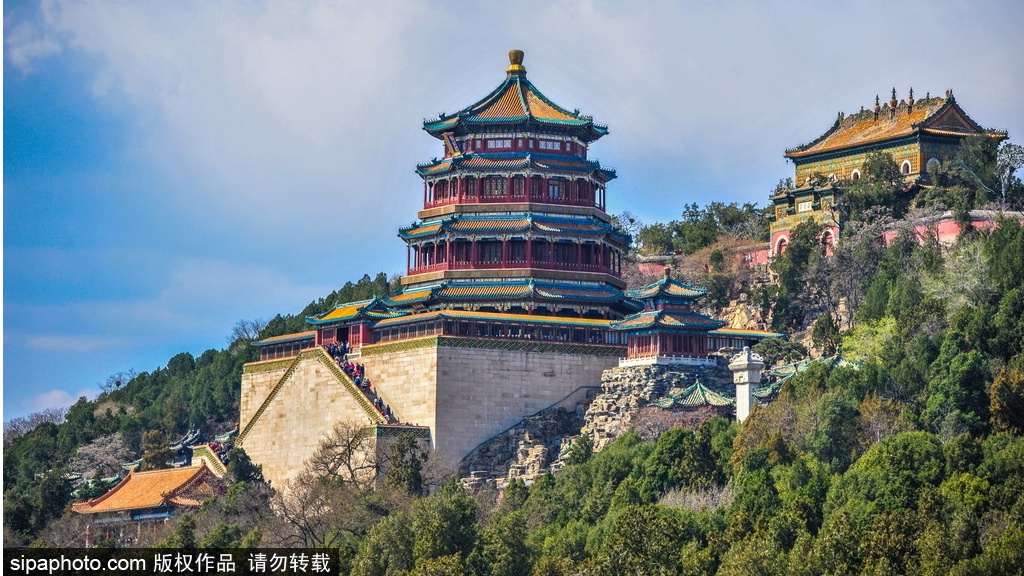
Brief introduction
The Summer Palace, originally named Qingyi Yuan, or the Garden of Clear Ripples, was an imperial garden constructed in 1750 by Emperor Qianlong in a bid to celebrate his mother's birthday. During the past few centuries, emperors and empresses spent their leisure time there, which is of great aesthetic value today.
The site in Beijing is an outstanding expression of the creative art of Chinese landscape garden design, incorporating the works of man and nature in a harmonious manner.
The Summer Palace was added to the list in November 1998.
History
The Summer Palace was first built in 1750 and largely destroyed in the war of 1860, then restored on its original foundation in 1886. It served four generations of the imperial family, and is now a popular resort for people from all walks of life.
The palace is an outstanding example of imperial parks and private gardens with features of both northern and southern China, and is the best preserved of all Chinese imperial parks. It integrates the natural landscape of hills and open water with manmade features, such as pavilions, halls, palaces, temples and bridges, into a harmonious and aesthetically exceptional whole.
The Summer Palace covers an area of 290 hectares, three-fourths of it being water. Its garden is divided into three sectors: the official sector, the private sector and the landscape sector. The imperial palaces are in the eastern part of the Summer Palace. The main structures in this area include the Hall of Benevolence and Longevity (Renshoudian), also known as the Hall of Industrious Government (Qinzhengdian), its side halls and offices for ministers. The private sector is composed of three large courtyards, focusing respectively on the Hall of Jade Ripples (Yulantang), the Hall of Happiness and Longevity (Leshoutang) and the Yiba Hall.
Cultural Heritage
Diversified architectural elements in the Summer Palace annotate the evolution of China as an integral country of many ethnic groups. For example, Kunming Lake is largely an imitation of West Lake in Hangzhou, East China's Zhejiang province. The long causeway to the west of the lake is called the West Dike, modeled after the Su Dongpo Causeway on West Lake. A series of six bridges on the dike are very similar to the six bridges on West Lake.
The large group of temples on Longevity Hill, including the Pavilion of the Fragrance of Buddha (Foxiangge), is typical of the architecture of Tibetan Buddhism. They were built in imitation of the Temple of Common Peace (Puningsi) and similar temples in the Chengde Mountain Resort, which were built at the same time.
The Long Corridor
The Long Corridor is the longest garden corridor in China, and one of the oldest structures in the Summer Palace. It is a covered promenade running for 728 meters along the northern shore of Kunming Lake and connecting with a row of buildings at the foot of Longevity Hill.
Besides the spectacular view of more than 8,000 paintings in traditional Chinese style that illustrates a large span of Chinese history and literature, the Long Corridor is also remarkable in its quake-proof function. According to historical records, over the past 251 years, although the slim and winding Long Corridor has suffered numerous storms, strong winds and even earthquakes, it has never tilted or been undermined.



